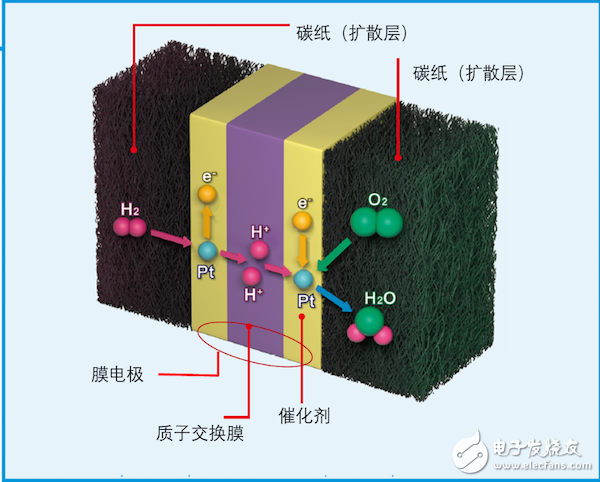To some extent, the fuel cell is a power drive that cannot be bypassed. Not long ago, the 2018 3rd China International Hydrogen Energy and Fuel Cell and Hydrogen Refueling Station Equipment Development Forum was successfully held at the Beijing International Exhibition Center. At the end of the meeting, Wuhan Himalaya Company invited many well-known experts in the industry to have an in-depth discussion on the current status of the fuel cell industry and the localization of hydrogen fuel cell components. The key to developing the hydrogen energy industry is the localization of parts. Our country has issued many encouraging policies in the hydrogen energy industry. In recent years, fuel cells have become a hot industry, but the real situation is that the domestic fuel cell industry can only survive on high subsidies from the state, 70% of fuel cell components Need to import, most of the technology is mastered abroad. Therefore, cost reduction and localization of key components are the only choice and only way out for the healthy development of the fuel cell industry. Judging from the fuel cell vehicles sold on the market, China is dominated by commercial vehicles, and abroad is dominated by passenger vehicles. The reason for this difference is that, objectively speaking, there is a certain gap between China and foreign countries in terms of fuel cell engines. Engines are involved in too many industries and need to be miniaturized too much. Foreign countries have done a good job in miniaturization and system integration, and are suitable for use in passenger cars; while commercial vehicles have a large space, which is very important for fuel cell engines, stacks and other parts. Miniaturization requirements are not high, suitable for the initial development of the industry. However, with China’s technological breakthroughs in key components and the industry’s good prospects, it is estimated that it will take about five years before the engine can be miniaturized, and China’s fuel cell passenger vehicles can meet the application standards. Cost is the bottleneck of fuel cell industrialization. Only through the localization of key materials can the cost be greatly reduced, and the full commercialization of fuel cells is possible. If the fuel cell industry is divided into upstream and downstream in terms of raw materials, parts, stacks, engines, and vehicles, Chinese companies must go upstream and overcome key technologies in order to have the right to speak and avoid tragedies from happening again. The key components of fuel cell include proton exchange membrane, catalyst, carbon paper (diffusion layer), bipolar plate, among which the proton exchange membrane and catalyst are also called membrane electrodes If the stack is the decisive factor in the fuel cell industry chain, then catalysts and membranes are the lifeblood of the entire industry. As the most core components of fuel cells, catalysts and proton exchange membranes are the key to localization research. In 2017, China produced a total of 1,272 fuel cell commercial vehicles, and almost all of the catalysts and membranes were imported. Therefore, the localization of catalysts and proton exchange membranes is a landmark event in the development of fuel cells. It is a milestone, indicating that China has mastered the core technology of the fuel cell industry and broke the long-term technological blockade abroad. At present, domestically produced catalysts and membranes are comparable to foreign excellent products. The performance of Himalaya's domestic catalyst is benchmarked with that of the excellent foreign product Gore. The comprehensive performance curve can be overlapped, and the cost is less than half of the imported catalyst. The durability is 5 times that of foreign products, and there will be no significant performance degradation even after 10,000 cycles. The consistency of mass production is good, and the current production capacity can support the demand for fuel cell industrialization. However, there are still shortcomings in the carbon paper (diffusion layer) in China. Almost all new energy sources are inseparable from carbon materials, but there are more researches on other materials in China, and less research and development on carbon materials. However, domestic research has certain advantages in terms of durability and lifespan of carbon materials. With the popularity of fuel cells, more and more companies and research institutions are conducting related research on carbon materials. I believe that in the near future, Fuel cells will use their own carbon materials. The painful lessons of decades in the traditional automobile market tell us that the market cannot change technology. Foreign-funded enterprises just enter the market in a market way. The only way to improve the strength of domestic parts manufacturers is to master core technologies. Similar to other fields, in the fuel cell industry, a single company cannot complete all the industry chains. Therefore, what this conference wants to advocate is the collaborative development of various companies to jointly promote the localization of hydrogen fuel cell components. In the future, it is necessary for the state and upstream and downstream companies to continue to increase R&D investment, based on catching up and benchmarking foreign excellent products, and continuous innovation, in order to jointly promote the commercial development of hydrogen fuel cells. Electric Test Pen ,Battery Detector,Circuit Tester,Voltage Test Pen YINTE TOOLS (NINGBO) CO., LTD , https://www.yinte-tools.com
